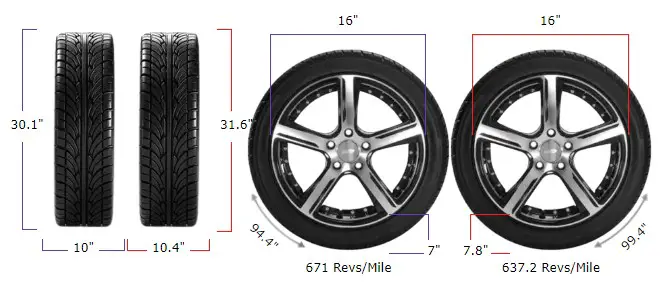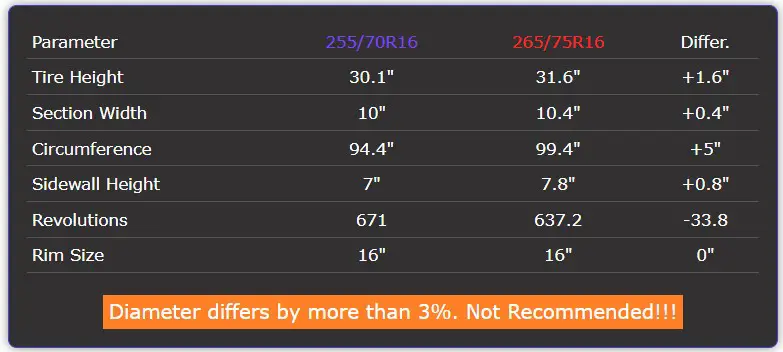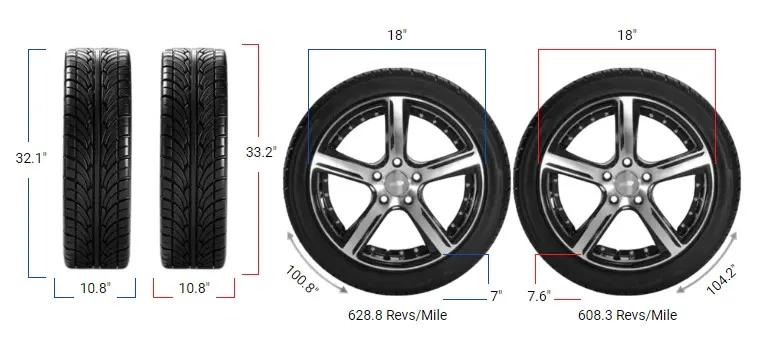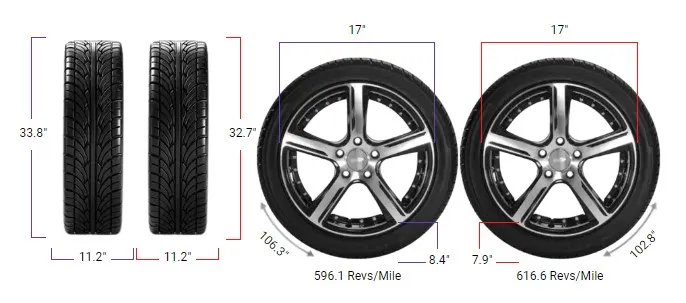Tire Size 255/70r16 vs 265/75r16

Are you contemplating a tire upgrade for better performance or aesthetics? Before making the switch, it’s essential to understand how a larger tire size can impact your vehicle both on and off the road.
- The 265/75R16 provides a larger diameter for improved ground clearance.
- A wider tire enhances traction and stability on various surfaces.
- The increased sidewall height may offer better cushioning on rough roads.
- The larger circumference can improve performance at higher speeds.
- Fuel efficiency may decrease slightly due to the larger tire size.
- The wider tire can give the vehicle a more aggressive appearance.

Fitment Guide
In our comparison, the diameter increases from 30.06 inches to 31.65 inches—a 5.3% difference. Such an increase exceeds the recommended limit, meaning the interchange isn’t advisable without making necessary adjustments to your vehicle to prevent issues like rubbing or clearance problems.
On-Road Impact
Switching tire sizes doesn’t just affect off-road capabilities; it has notable implications for everyday driving. Here’s how the change influences on-road performance.
Gas Mileage
An increase in tire size often leads to decreased fuel efficiency. The larger 265/75R16 tires have a greater circumference—99.43 inches compared to 94.42 inches—meaning each rotation covers more ground but requires more energy to turn.
The additional weight and increased rolling resistance can strain the engine, leading to higher fuel consumption, especially in stop-and-go traffic.
Ride Comfort
The taller sidewall height of the 265/75R16 (7.82 inches vs. 7.03 inches) can absorb bumps and potholes more effectively, potentially enhancing ride comfort.
However, the added unsprung mass may negatively affect handling, making the vehicle feel less agile during cornering and more prone to body roll.

Speedometer Accuracy
Speedometers are calibrated based on the original tire size. With a 5% reduction in revolutions per mile (from 671.04 to 637.23), your speedometer will under-report your actual speed.
At a speedometer reading of 60 mph, your true speed would be approximately 63 mph. This discrepancy not only risks speeding tickets but also affects odometer readings and could interfere with systems reliant on speed data.
Braking Performance
Larger tires can impact braking distance. The increased rotational inertia means brakes have to work harder to slow down the wheels.
This could lead to longer stopping distances, especially in emergency situations, and increased wear on brake components.
Aesthetics Look
From a visual standpoint, larger tires fill the wheel arches more completely, giving the vehicle a more assertive and rugged appearance.
This can enhance the overall aesthetic appeal, making it look more off-road ready and substantial on the road.

Off-Road Impact
For those who venture off the beaten path, tire size plays a critical role in capability and performance. Here’s how the change affects off-road driving.
Ground Clearance
An increase in tire diameter directly raises the vehicle’s ground clearance by half the diameter difference, approximately 0.8 inches.
This elevation helps in navigating over rocks, logs, and uneven terrain without damaging the undercarriage.
Traction
A wider tread (10.43 inches vs. 10.04 inches) offers a larger contact patch with the ground, improving traction on loose surfaces like gravel, sand, and mud. The higher sidewall also allows for airing down the tires to increase grip without risking rim damage.
Vehicle Capability
The enhanced sidewall height contributes to better flex when traversing obstacles, allowing the tire to mold over uneven surfaces. This improves grip and stability on challenging trails, effectively boosting the vehicle’s off-road capability.
Durability & Wear
Off-road conditions can be harsh on tires. The thicker sidewalls of the 265/75R16 may offer increased resistance to punctures and cuts from sharp rocks and debris.
However, on-road, the softer compound and aggressive tread pattern might lead to quicker wear, especially if the tires are not designed for predominantly highway use.
Suspension & Drivetrain Stress
Larger tires can put additional strain on suspension components and the drivetrain. The increased leverage from the larger diameter can accelerate wear on parts like axles, bearings, and joints, potentially leading to more frequent maintenance or the need for upgrades.
255/70R16 vs 265/75R16
This table compares the key specifications of tire sizes 255/70R16 and 265/75R16.
| Feature | 255/70R16 | 265/75R16 | Difference |
|---|---|---|---|
| Diameter inches (mm) | 30.06 (763.4) | 31.65 (803.9) | 1.59 (40.5) 5.3% |
| Width inches (mm) | 10.04 (255) | 10.43 (265) | 0.39 (10) 3.9% |
| Circumference inches (mm) | 94.42 (2398.29) | 99.43 (2525.53) | 5.01 (127.23) 5.3% |
| Sidewall Height (mm) | 7.03 (178.5) | 7.82 (198.75) | 0.79 (20.25) 11.3% |
| Revolutions per mile (km) | 671.04 (416.96) | 637.23 (395.96) | -33.81 (-21.01) -5% |
| Speedo Reading | 20 mph | 21.06 mph | +1.06 mph |
Difference Between 255/70R16 and 265/75R16
The main difference is diameter; the 265/75R16 tire is 1.59 inches (40.5 mm) taller than the 255/70R16, impacting ground clearance and handling.
Can I Use 265/75R16 Instead of 255/70R16?
No, the 265/75R16 tire is 5.3% larger in diameter, which exceeds the recommended 3% difference, potentially affecting vehicle handling, speedometer accuracy, and performance.
How Much Taller Is a 265/75R16 Tire Than a 255/70R16?
The 265/75R16 tire is 1.59 inches (40.5 mm) taller than the 255/70R16, representing a 5.3% increase in overall diameter.
How Much Wider Is a 265/75R16 Tire Than a 255/70R16?
The 265/75R16 tire is 0.39 inches (10 mm) wider than the 255/70R16, offering a 3.9% increase in width for better traction.
Our Observation
Switching from 255/70R16 to 265/75R16 offers tangible benefits for off-road enthusiasts, such as improved ground clearance and better traction. The aesthetic upgrade is also a plus for those who value a more commanding road presence.
However, the 5.3% increase in diameter exceeds the recommended limit, which can lead to on-road drawbacks like reduced fuel efficiency, altered speedometer readings, and potential braking issues.
Off-road, while the benefits are significant, the increased stress on mechanical components shouldn’t be overlooked. For drivers who primarily stay on paved roads, the trade-offs might not justify the switch.
Conversely, if off-roading is a significant part of your driving experience, the enhanced capabilities may outweigh the downsides. It’s crucial to weigh these factors and consider any necessary vehicle modifications to accommodate the larger tires safely.



